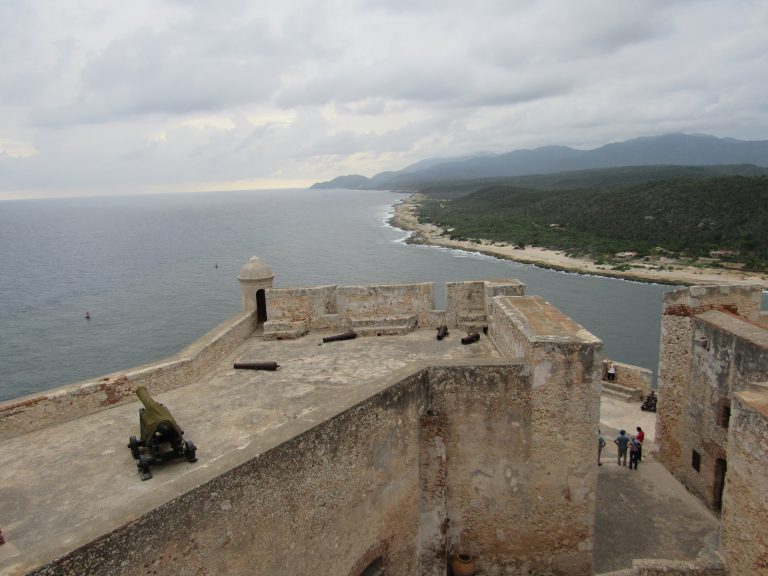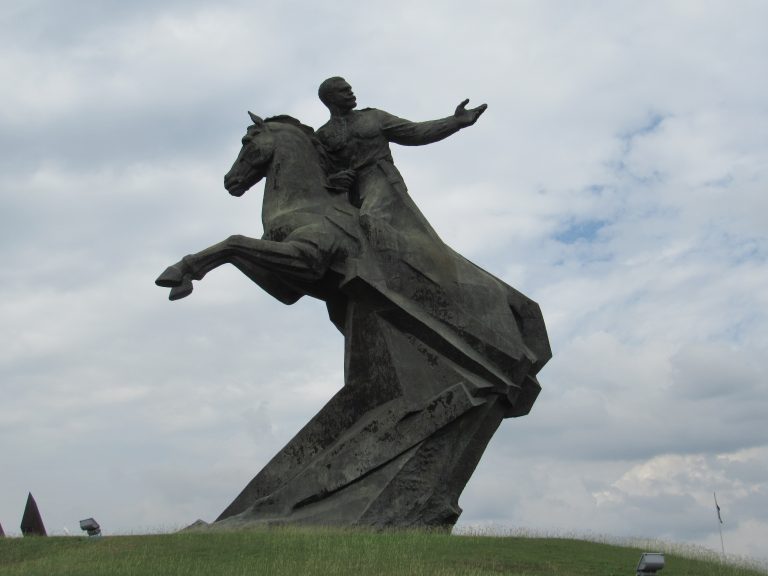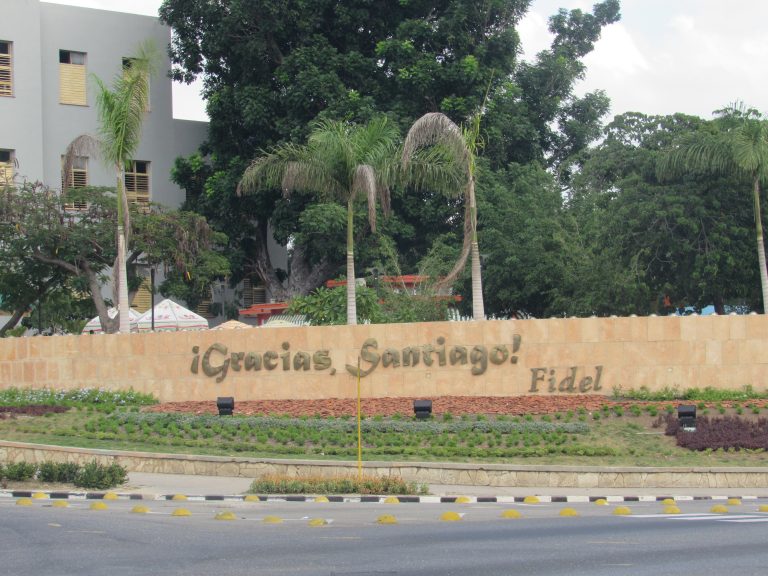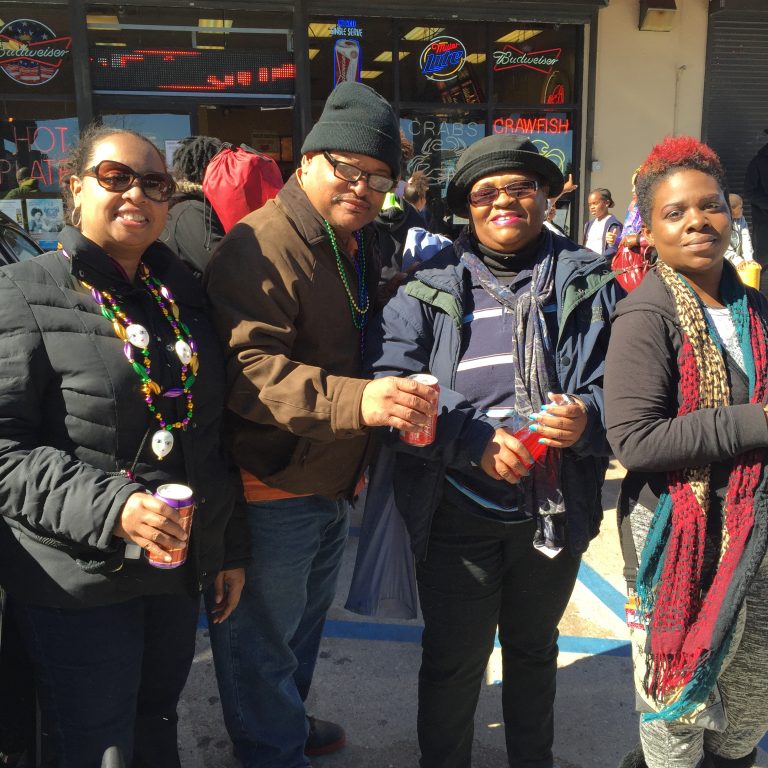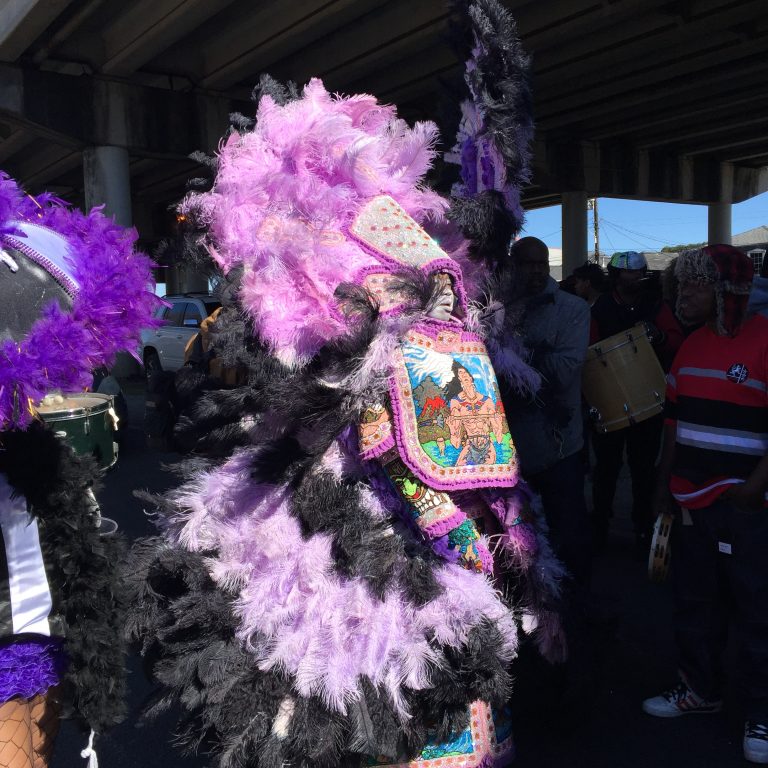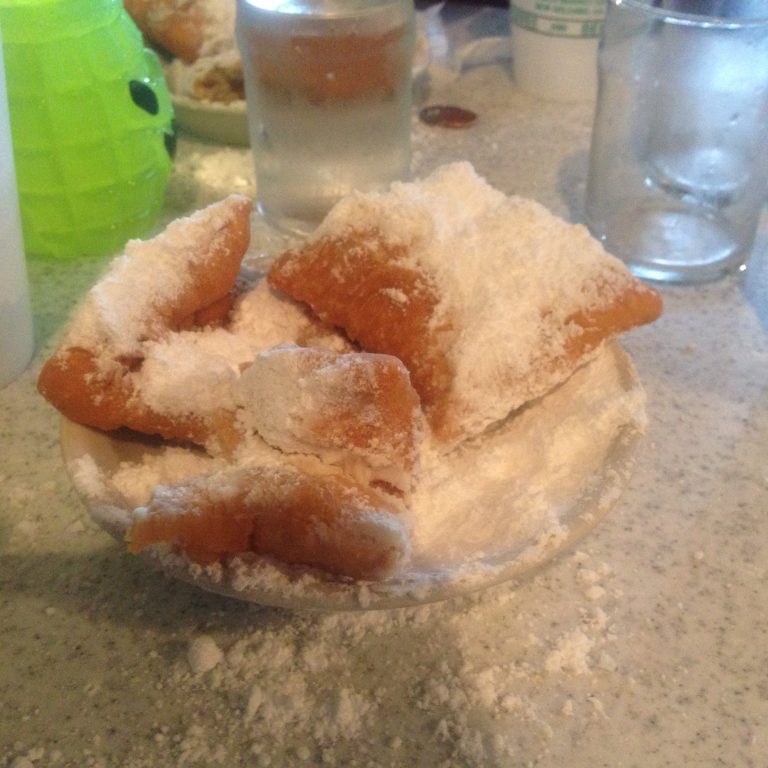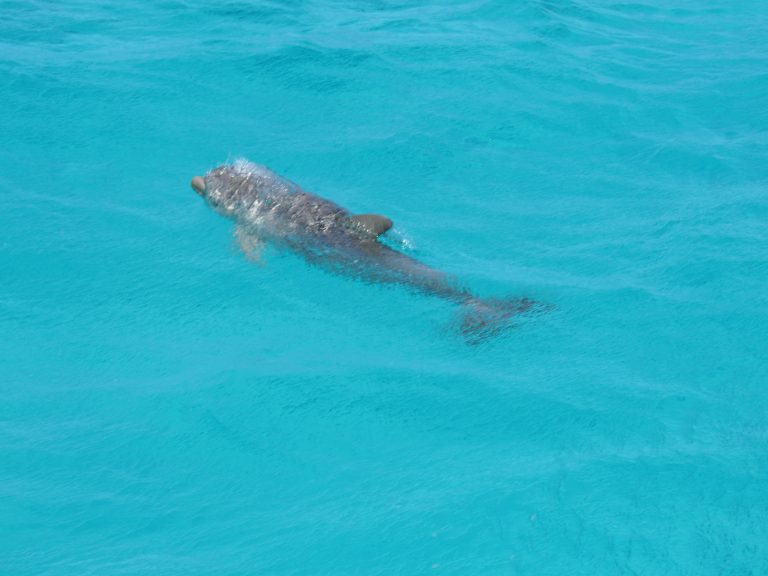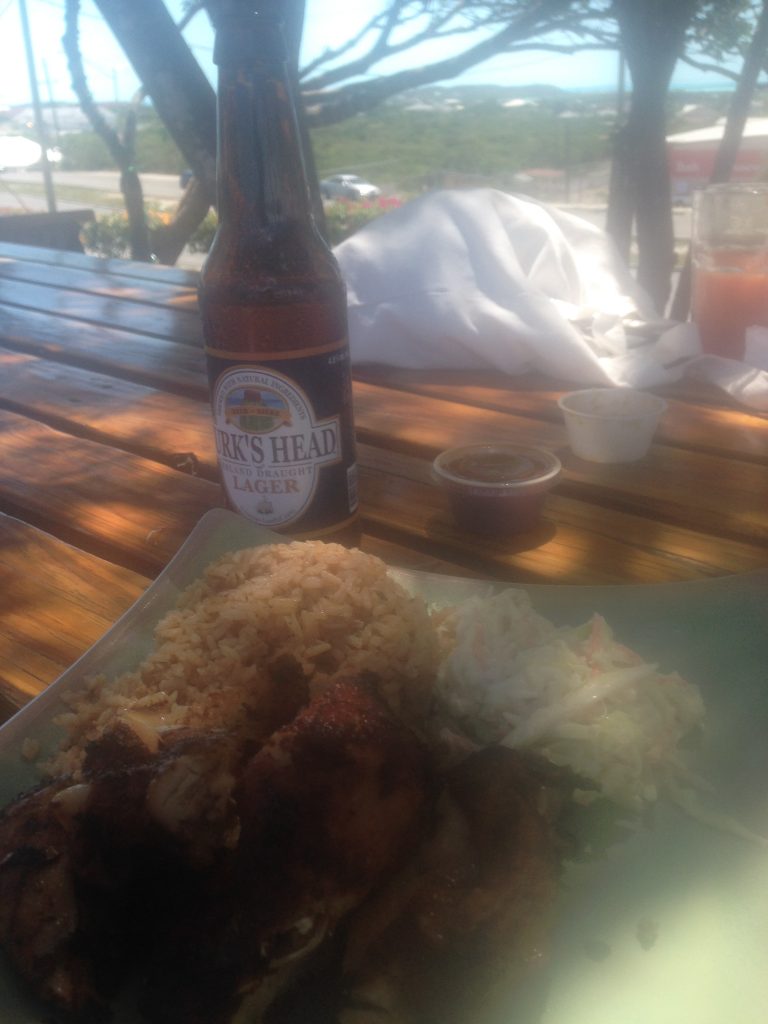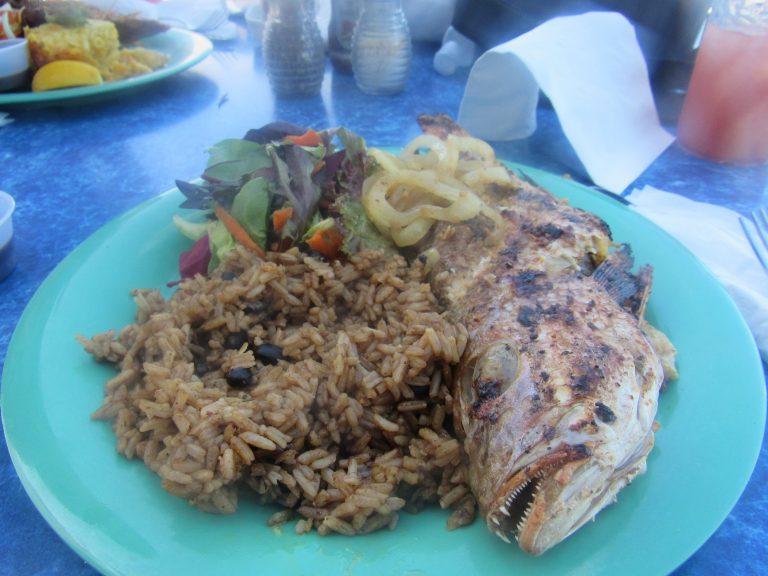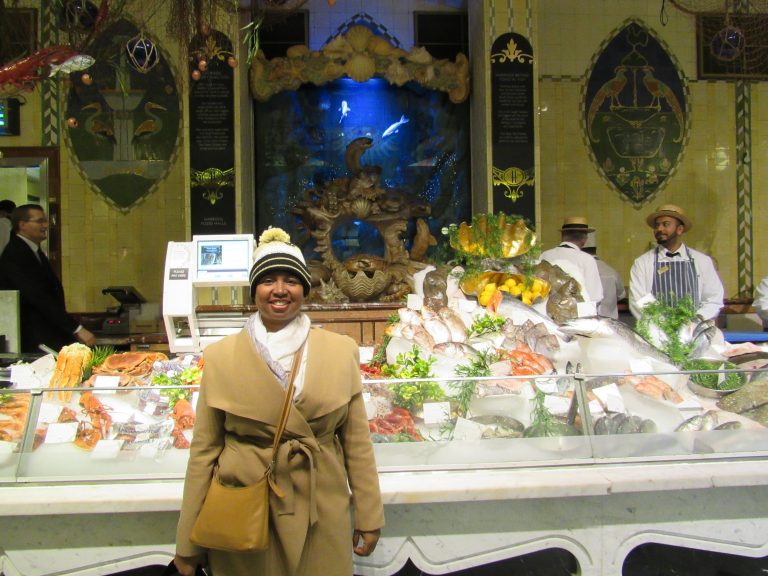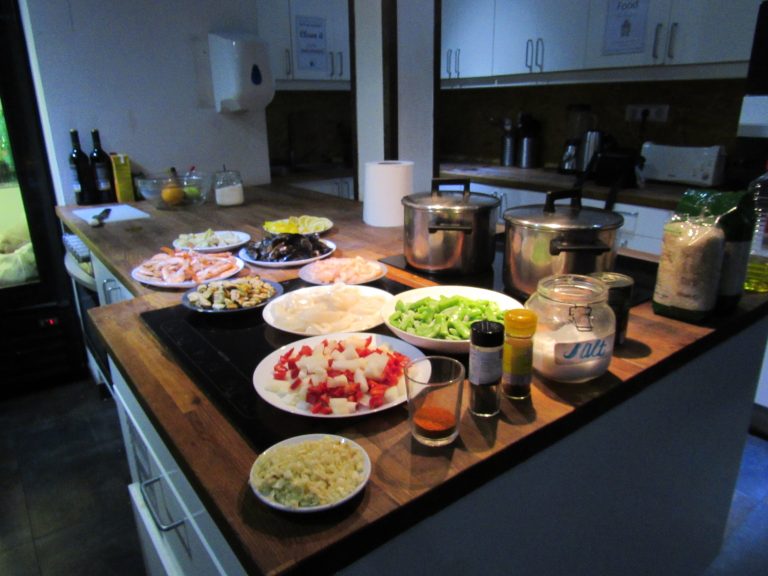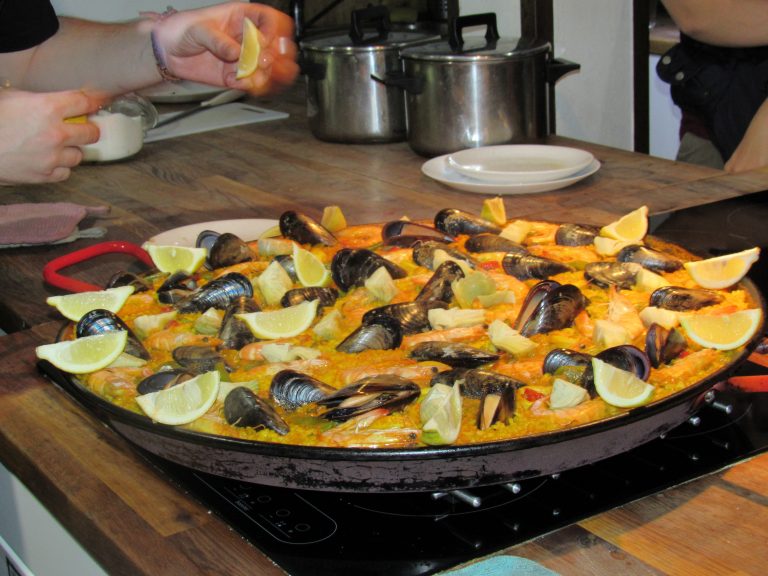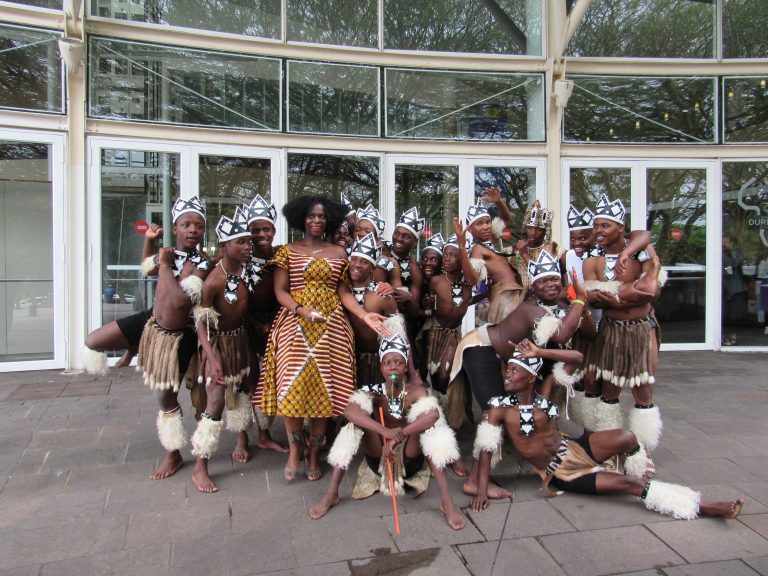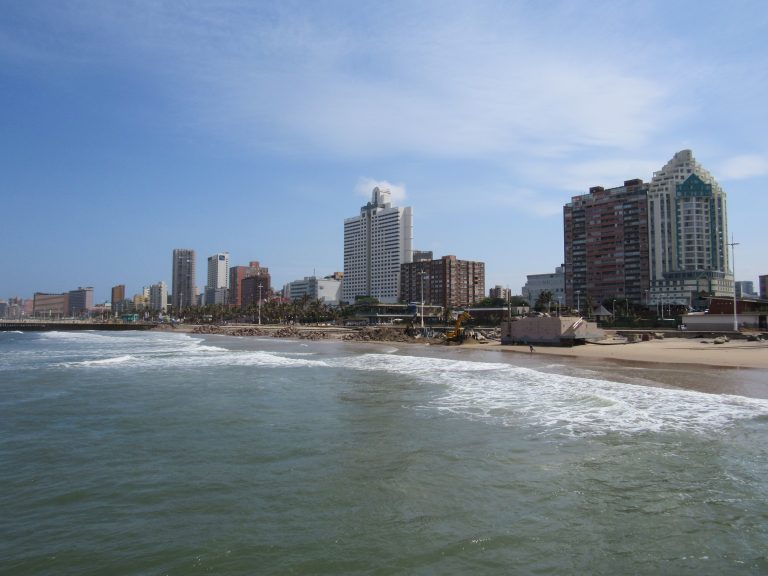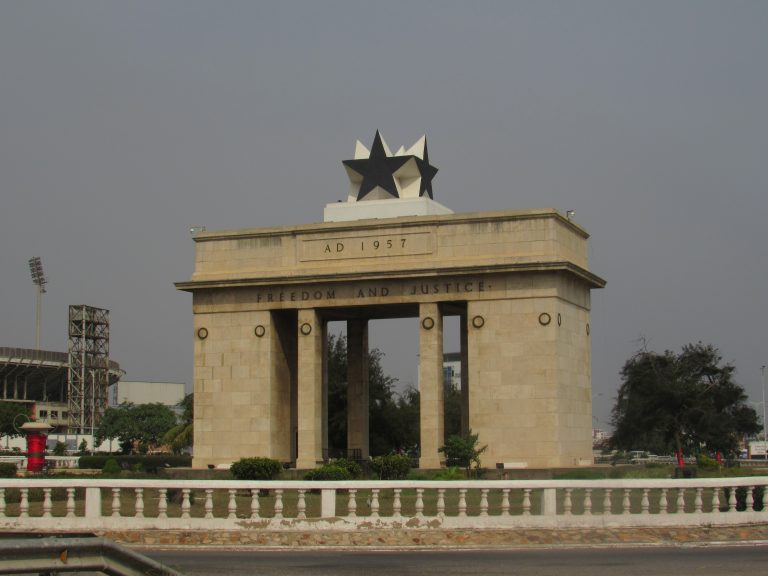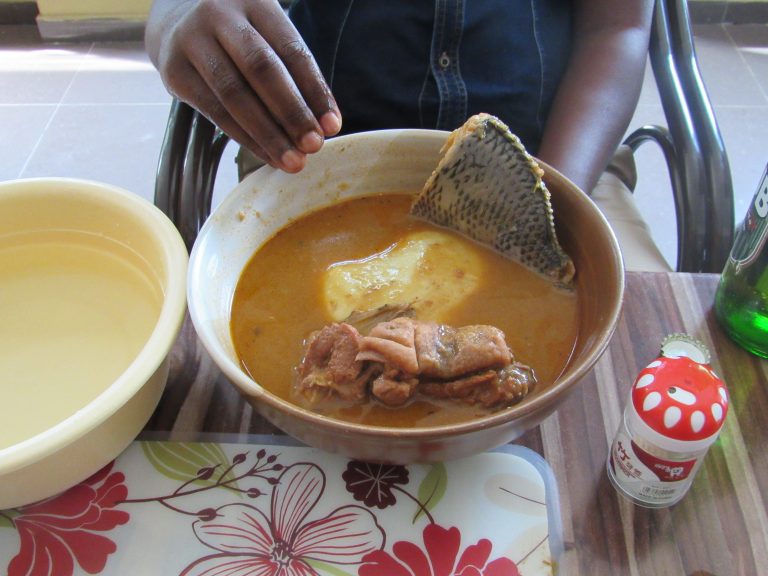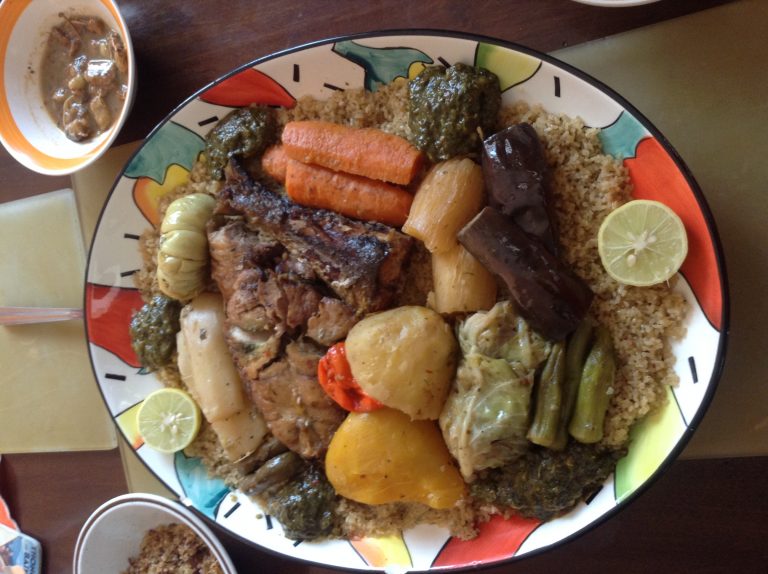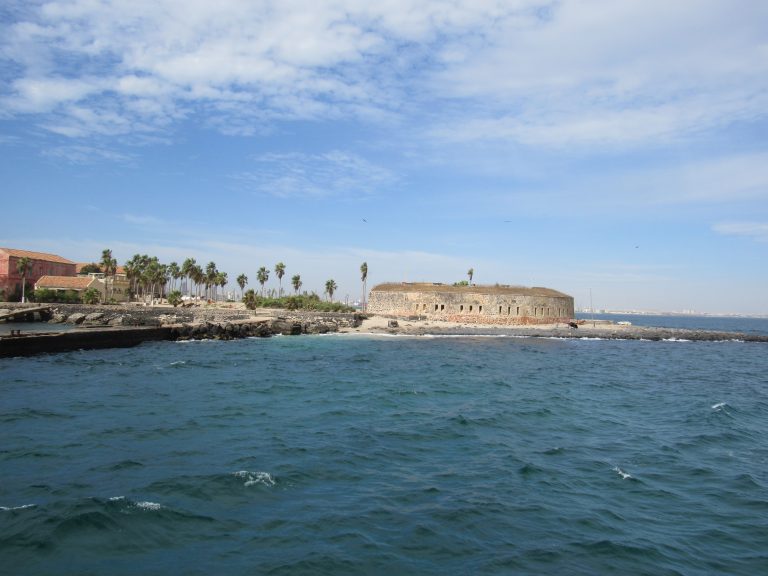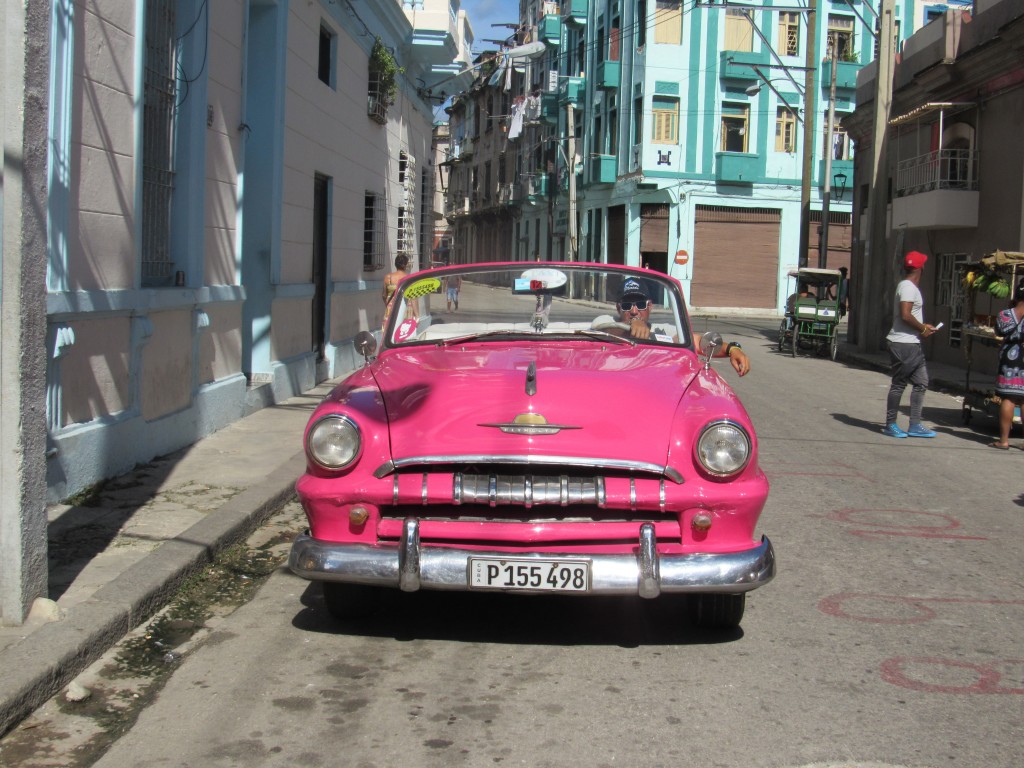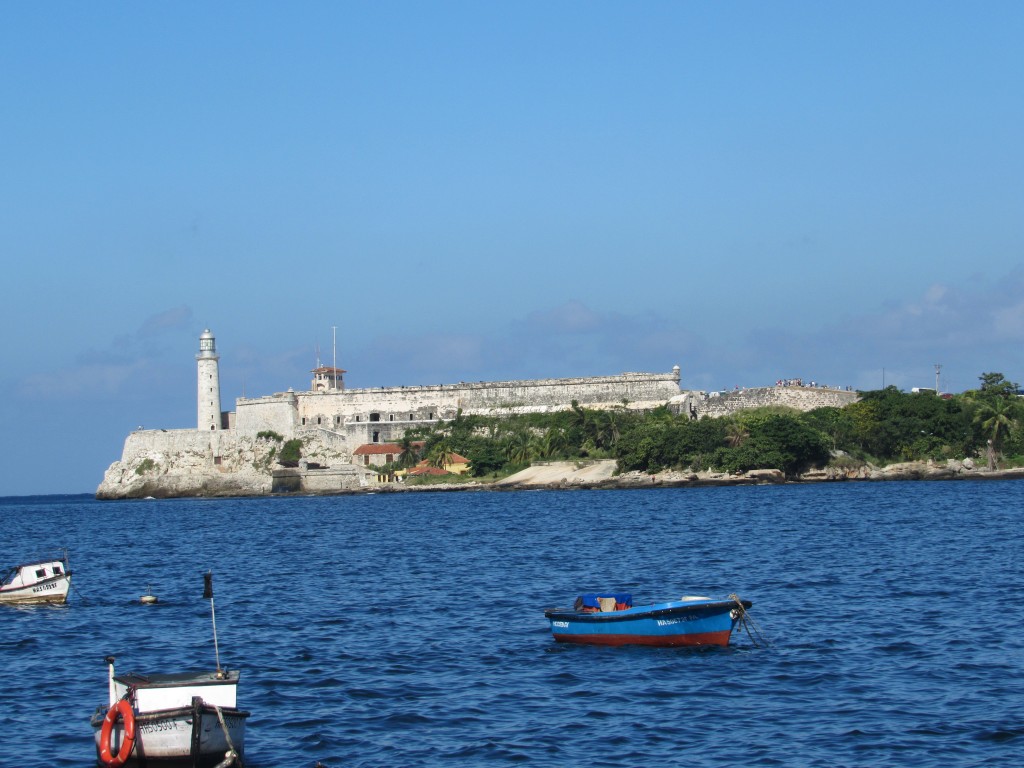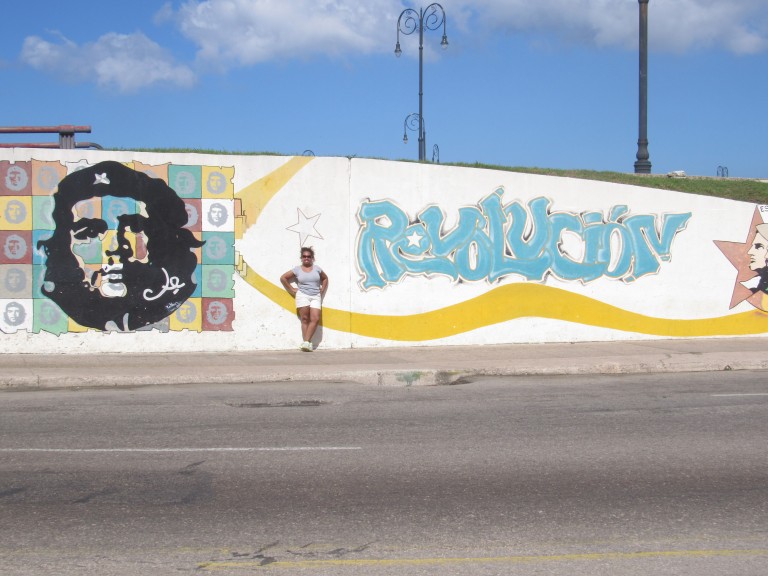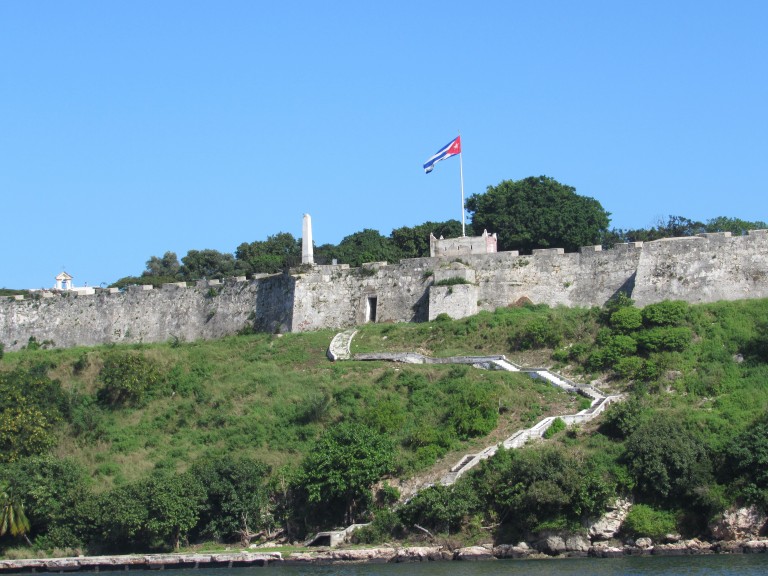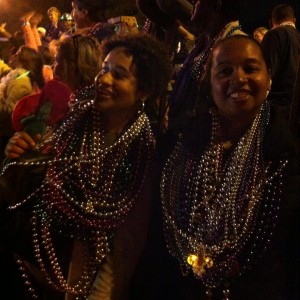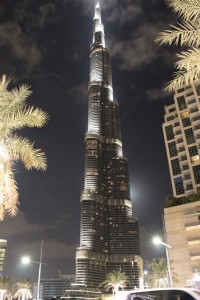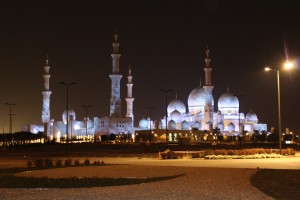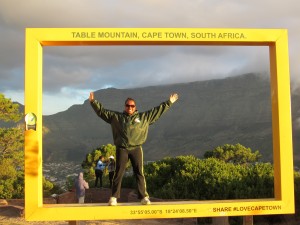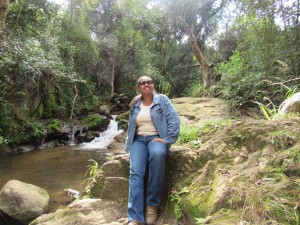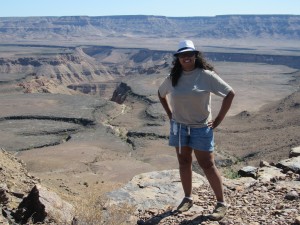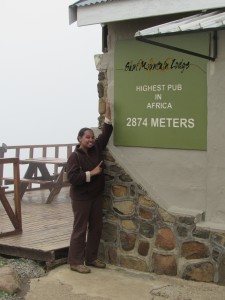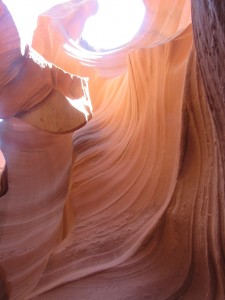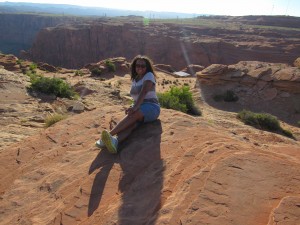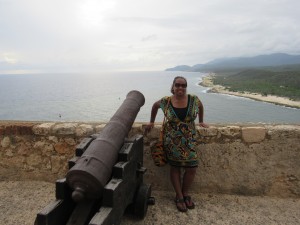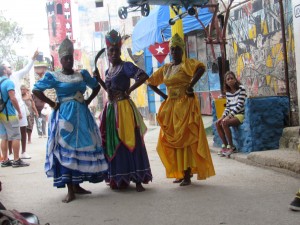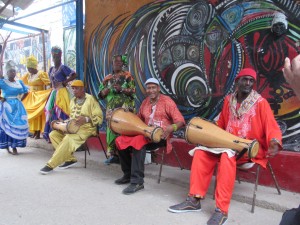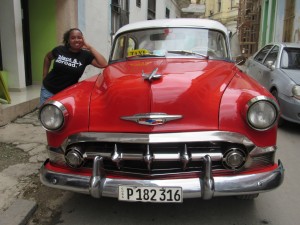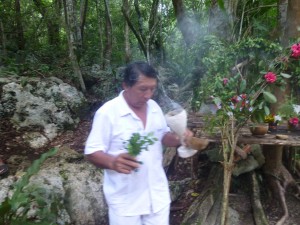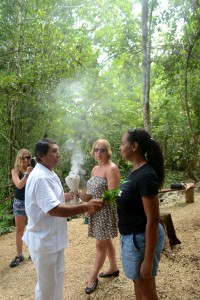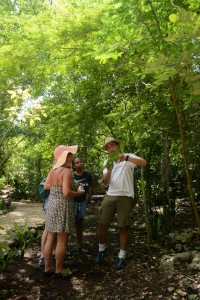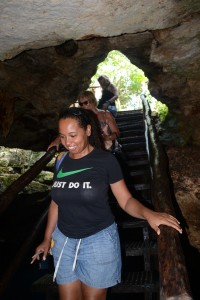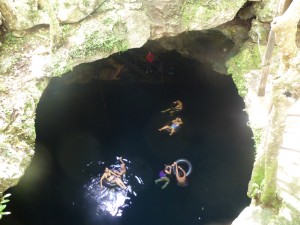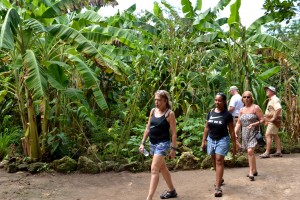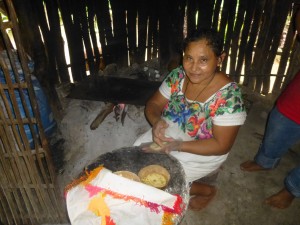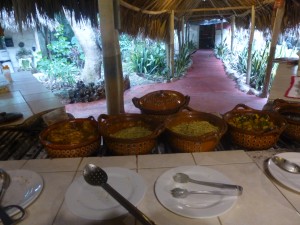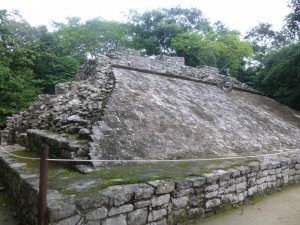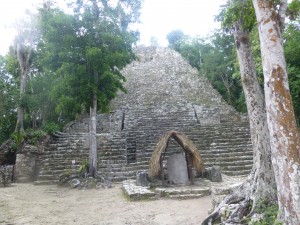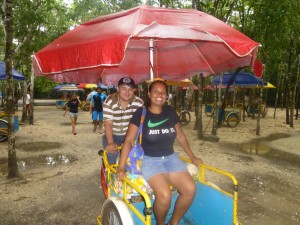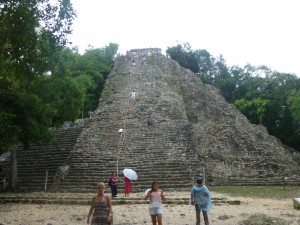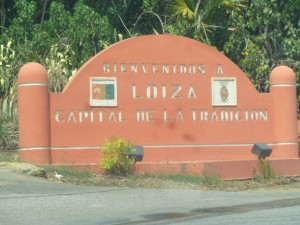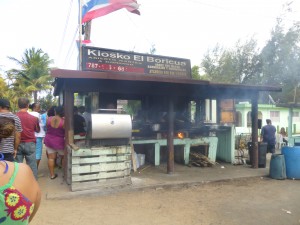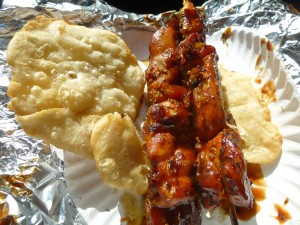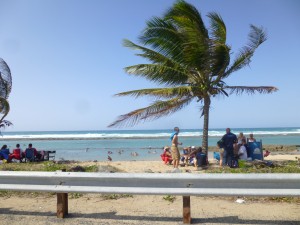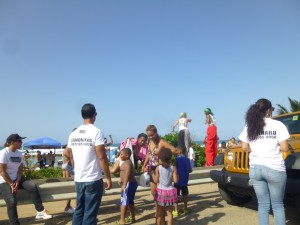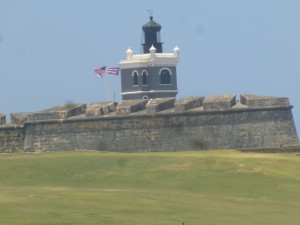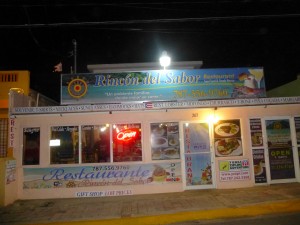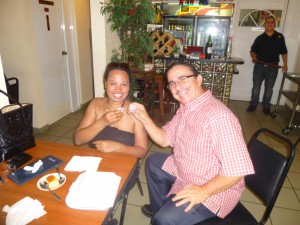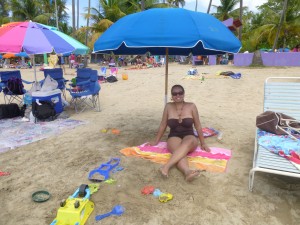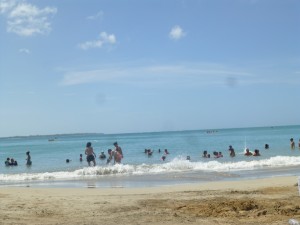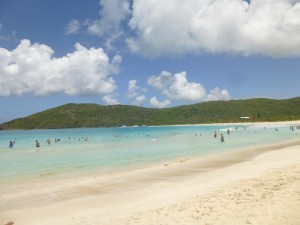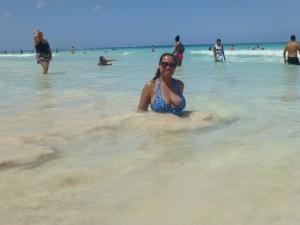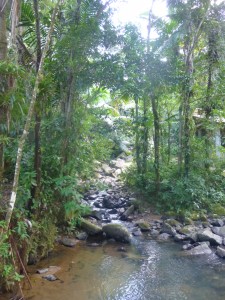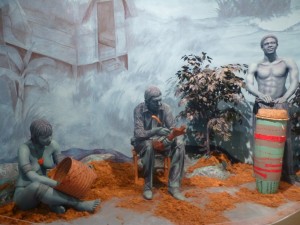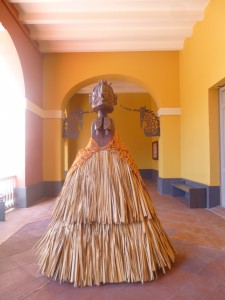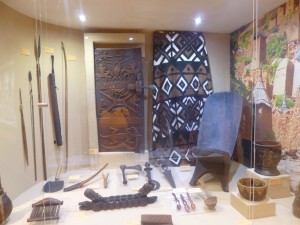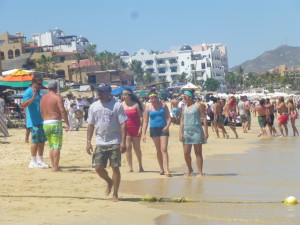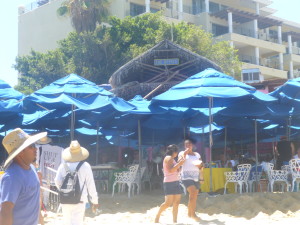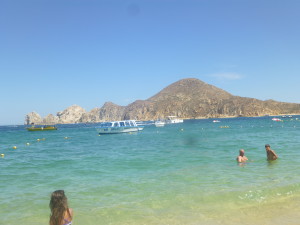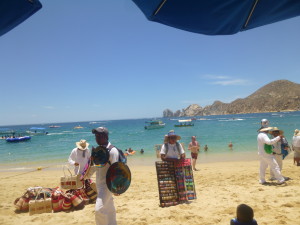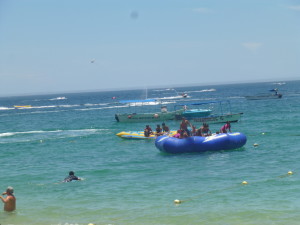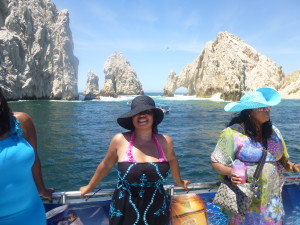The post Why You Need to Visit Santiago de Cuba first appeared on The Travel Sista.
]]>Havana may be Cuba’s capital and largest city, but Santiago de Cuba is its cultural capital.
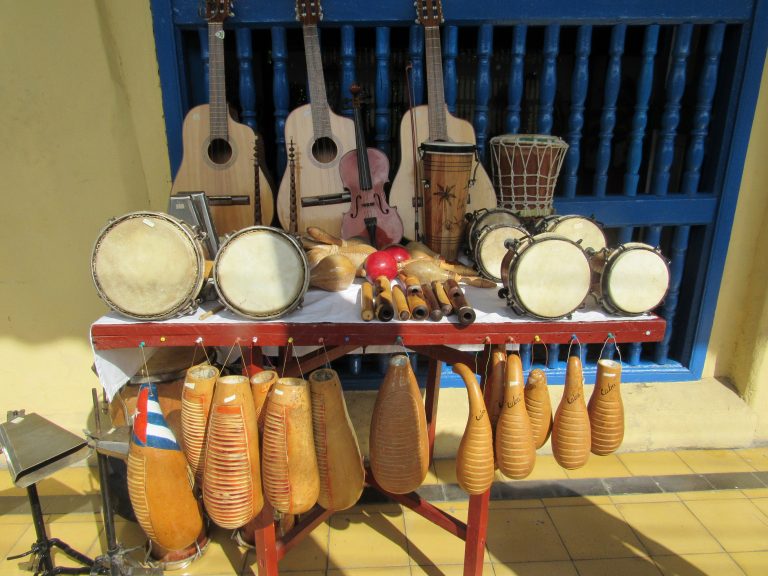 Nestled on the far southeastern side of the island, near the infamous Guantanamo Bay, Santiago de Cuba (Santiago) is the second largest city in Cuba, infused with Afro-Caribbean cultural and rebel influences.
Nestled on the far southeastern side of the island, near the infamous Guantanamo Bay, Santiago de Cuba (Santiago) is the second largest city in Cuba, infused with Afro-Caribbean cultural and rebel influences.
It was in Santiago, where on July 26, 1953, Fidel Castro and others launched their Revolutionary movement with a failed armed attack on the Moncada Barracks. It was also in Santiago, where on January 1, 1959, Fidel Castro proclaimed the victory of the Cuban Revolution from a balcony on Santiago’s city hall. But Santiago’s revolutionary spirit was born long before Fidel ever touched foot there.
Santiago is home to Cuba’s largest Afro-Cuban population, most of whom are descended from slaves brought to Cuba from Africa and Haiti in the 1700s and 1800s to work its sugar plantations. Those slaves turned to music, dance and spirituality to survive the brutal conditions and that creolized legacy remains alive today.
In what can only be described as a secret act of rebellion, African slaves disguised their religion under acceptable Catholic symbols after their traditional religions were banned. Catholic saints came to represent Yoruban orishas (divine beings), each with distinct attributes and its own color. Today, a large number of Santiagueros practice Afro-Cuban religions, most notably Santería. You’ll often see them wearing red, white, or yellow beads, with each color representing a different saint.
Santiago is the birthplace of son, the traditional music and dance from which salsa dancing is derived, and guaguancó, a sub-genre of Cuban rumba, combining percussion, voices, and dance. The music permeates every pore of Santiago and you couldn’t escape it if you tried. From the local coffee shops and bars, to the legendary Casa de la Trova, Casa de la Musica, Casa de las Tradiciones, Casa del Caribe, and Patio de los dos abuelos, the intoxicating beats of Afro-Cuban music will draw you in and leave you wanting more.
From Havana, Santiago is a 1.5 hour flight or a long 16 hour bus ride, but it’s worth every minute. If you haven’t yet been, I encourage you to go and experience the exciting fusion of rum, music and revolution. To help you plan, here’s a list of my favorite things to do there:
1. Museo del Carnaval
If you want to learn the history of Santiago’s biggest party, held each year in late July, the Carnival Museum is the place to go. You’ll find floats, effigies, costumes, musical instruments, and more from past Carnivals. If you’re lucky, you can also catch a live folklorico dance performance on the patio. They’re typically held in the afternoon around 4:00 pm, but the schedule is irregular.
2. Julio de 26 Museum
The July 26 Museum commemorates that day in 1953, when more than 100 revolutionaries led by Fidel Castro stormed dictator Fulgencio Batista’s troops at Moncada Barracks, then Cuba’s second-most important military garrison. The barracks have since been converted into a school called Ciudad Escolar 26 de Julio, and the museum is located near gate 3, where the main attack took place. There are replica bullet holes at the entrance to serve as a poignant reminder of that day. The museum contains interesting historical relics, including a scale model of the barracks, diagrams and models of the attack’s planning and aftermath, and photographs of the 61 fallen men.
3. El Monumento Al Cimarrón
Built on a hill in the nearby town of El Cobre, the Monument to Runaway Slaves is a towering bronze and iron sculpture that honors one of Cuba’s earliest slave revolts that took place on July 24, 1731. The sculpture stands on a nganga (which means a metal pot in the “Regla de Palo Monte” Afro-Cuban religion), in which religious believers and practitioners place their offerings. El Cobre is located 14 miles outside of Santiago.
4. The Basílica Santuario Nacional de Nuestra Señora de La Caridad Del Cobre
Also located in El Cobre, this shrine celebrates Cuba’s virgin saint Our Lady of Charity, a black Madonna that so closely resembles the African orisha Ochún that many Cubans believe them to be one and the same.
5. Castillo de San Pedro de la Roca del Morro
Known locally as “El Morro”, this UNESCO World Heritage site was built in 1638 as a military fortress to defend foreign attacks, and later served as a prison. Today, it is a museum and popular tourist attraction. This well-preserved fort has several levels of terraces overlooking Santiago Bay and offers amazing panoramic views of Santiago’s coastline. Every day at sunset there is a cañonazo ceremony (firing of the cannons). El Morro is located about six miles southwest of the city center.
6. House of Popular Religions
This cultural museum allows visitors to explore and learn about Cuba’s various Afro-Cuban religions, including Santería which is the most widely practiced. The museum houses a variety of religious icons, with displays symbolizing the syncretism of Catholic religious symbols with African orishas — images of Jesus Christ can be seen juxtaposed with ceremonial machetes and stuffed reptiles used in Santería ceremonies.
7. Casa del Caribe
This is the place to be on Sunday evenings from 5:00 to 9:00 pm for the weekly rumba. It’s a high energy, action packed music and dance performance celebrating the deities of Afro-Cuban religion. This cultural institution has dance lessons and events most days of the week. They also organize the Festival del Caribe and the Fiesta del Fuego every July.
8. Parque Céspedes
This square is the social hub of Santiago, where locals come to see and be seen — and to enjoy the open wifi signal. You can expect to see anything here, from live music and dance performances, to vendors selling roasted peanuts, to people walking, talking, flirting, and laughing. The square is surrounded by several colonial era buildings, including the Ayuntamiento or Town Hall, the former San Carlos Club, the Casa Granda Hotel, and the beautiful Catedral de Nuestra Señora de la Asunción (which holds the record for being the most reconstructed and remodeled building in the city).
9. Parque Alameda / Malecón
This park is the center of the Malecón (boardwalk) and features a playground, gym, palm trees and public wi-fi. It’s a great place to relax and people watch or take a stroll along the seafront. There’s even a restaurant that looks over the bay.
10. Padre Pico Steps
These steps are the gateway to the Tivolí neighborhood, Santiago’s picturesque old French quarter, and one of its main attractions. The 52 steps are more than 100 years old and often the site of rousing dominoes games.
11. Plaza de Revolución
This square is anchored by an impressive statue of Afro-Cuban hero and native son, Antonio Maceo. Maceo sits atop his horse and is surrounded by 23 raised machetes. There is also a small museum which contains information on his life. Directly across the street is a large billboard of Fidel Castro with the city’s motto: “rebelde ayer, hospitalaria hoy, heroica siempre” (rebellious yesterday, hospitable today, heroic always).
12. Enjoy Santiago’s People and Nightlife
Santiagueros are very welcoming and friendly, and they will be the highlight of your visit to Santiago. Go to the local coffee shops, parks and bars where they hang out. Play dominoes. Take salsa and rumba lessons. Chat with them and learn about their fascinating history, religion, and culture (granted you will struggle if you don’t speak Spanish since most don’t speak English; but they’ll go out of their way to try and there’s always Google Translate). Chances are they’ll invite you to their home or to a party, and you’ll leave with new lifelong friends.
And when it comes to nightlife, Santiago is second to none. There is a dizzying number of bars, clubs and other venues with live jazz, salsa, son, and other Caribbean music, all of course with spectacular dancing. So let your hair down and have fun. But don’t say I didn’t warn you. Santiago is addicting.
Have you been to Santiago de Cuba? What are your favorite things to do there? Share in the comments below.
Share ThisThe post Why You Need to Visit Santiago de Cuba first appeared on The Travel Sista.
]]>The post What Trump’s New Cuba Travel Rules Mean For You first appeared on The Travel Sista.
]]>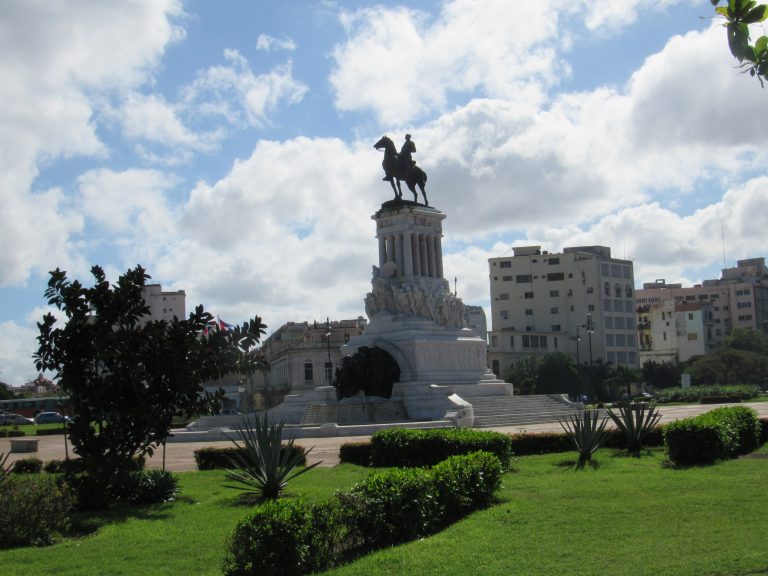
In 2014, former US President Barack Obama announced sweeping changes to America’s policy towards Cuba. The United States re-established diplomatic ties and re-opened the American embassy in Havana. Obama also authorized travel by general license for all 12 categories set forth in the Cuban Assets Control Regulations, eliminating the need to apply for a specific license for most travelers. Though tourism remained banned, Americans could plan individual “People-to-People” trips with a full schedule of educational exchange activities. Travelers could meet the regulatory requirements with museum visits, cultural sightseeing, conversations with Cubans about their society, and keeping a daily journal. These relaxed rules made travel to Cuba easier and more affordable for the average American, who prior thereto was relegated to expensive group trips. It also benefitted the growing number of Cuban small business owners, including the owners of casa particulares (private lodging similar to a bed and breakfast) and paladares (private restaurants), taxi drivers and tour guides.
As many travelers were dreading, on June 16, 2017 President Donald Trump announced changes that would reverse some of the Obama era policies. The new rules, dubbed “A Better Deal for Cuba”, prohibit Individual People to People travel and any direct transactions with entities related to the Cuban military, intelligence, or security services, including state-owned hotels, restaurants, tour buses, and other businesses (the State Department will be publishing a list of prohibited entities). Trump also announced increased enforcement actions, with travelers subject to immigration checks or Treasury Department audits to ensure they fall under one of the permitted categories.
On the same day as Trump’s announcement, the Treasury Department Office of Foreign Assets Control (OFAC) issued FAQS regarding the policy changes. Here is what we know:
1. INDIVIDUAL PEOPLE TO PEOPLE TRAVEL WILL NO LONGER BE AUTHORIZED
As directed by Trump, within 90 days OFAC intends to issue regulations that will end individual People to People travel to Cuba. The announced changes do not take effect until the new regulations are issued. The new policy will not result in changes to the other (non-individual people-to-people) authorizations for travel.
For persons with pre-planned trips, there is no need to cancel. As long as you have completed at least one travel-related transaction (i.e., purchasing a flight or reserving lodging) prior to the June 16, 2017 announcement, you are exempt from the new rules (provided the travel-related transactions are consistent with then current OFAC regulations).
2. GROUP PEOPLE TO PEOPLE TRAVEL WILL STILL BE AUTHORIZED
According to current OFAC regulations, travelers utilizing the People to People authorization must maintain a full-time schedule of educational exchange activities that are intended to enhance contact with the Cuban people, support civil society in Cuba, or promote the Cuban people’s independence from Cuban authorities, and that will result in meaningful interaction between the traveler and individuals in Cuba.
Group People to People travel will still be allowed, but it must take place under the auspices of an organization that sponsors such people-to-people exchanges and travelers must be chaperoned by an organization representative to ensure they maintain a full-time schedule of educational exchange activities.
3. INDIVIDUAL TRAVEL UNDER THE SUPPORT FOR THE CUBAN PEOPLE CATEGORY WILL STILL BE AUTHORIZED
The Support for the Cuban People category encompasses travel-related transactions and other transactions that are intended to provide support for the Cuban people, which include activities of recognized human rights organizations; independent organizations designed to promote a rapid, peaceful transition to democracy; and individuals and non-governmental organizations (NGOs) that promote independent activity intended to strengthen civil society in Cuba. The traveler’s schedule of activities must not include free time or recreation in excess of that consistent with a full-time schedule in Cuba.
Picture of the night @MarioDB and I hammered out the new Cuba policy. Thankful for his leadership! #cubancoffee #BetterDealforCuba pic.twitter.com/ukpQJo2eev
— Marco Rubio (@marcorubio) June 16, 2017
US Senator Marco Rubio, who co-authored the new policy, clarified via Twitter that individual travel under the Support for the Cuban People category is authorized as long as travelers stay in privately owned lodging rather than military run hotels.
& headline not https://t.co/BJQeStuAh2 for Cuban people category allows individual travel, but can’t stay at military controlled hotel 3/3
— Marco Rubio (@marcorubio) June 17, 2017
Individual Americans can travel to #Cuba under Support for the Cuban people category but must use privately owned lodging like AirBnB 4/5
— Marco Rubio (@marcorubio) June 16, 2017
However, in order to qualify under this category, individual travelers will seemingly need to have more engagement with NGOS, organizations and individuals working to promote democracy and/or to improve the lives of the Cuban populace.
4. AUTHORIZED TRAVEL BY CRUISE SHIP OR PASSENGER VESSEL WILL STILL BE ALLOWED
Travelers will still be able to engage in authorized travel to Cuba by cruise ship or passenger vessel, provided it is not with a prohibited entity.
5. TRAVELERS MAY STILL PURCHASE AIRLINE TICKETS FOR AUTHORIZED TRAVEL TO CUBA
The new policy does not change how persons subject to U.S. jurisdiction traveling to Cuba pursuant to the 12 categories of authorized travel may purchase their airline tickets.
6. TRAVELERS MAY STILL PURCHASE AND IMPORT UNLIMITED AMOUNTS OF CIGARS AND ALCOHOL INTO THE UNITED STATES FOR PERSONAL USE
Under current OFAC regulations, travelers engaged in authorized Cuba travel may buy and import unlimited dollar amounts of Cuban cigars and alcohol in accompanied baggage, provided it is for personal use only. It is unclear whether this policy will change under Trump’s new rules, but as of now it is still effective.
WHAT THIS MEANS FOR FUTURE TRAVEL TO CUBA
Once you peel back the layers, Trump’s new changes represent only a partial shift from Obama policies. Individual trips may be more difficult to plan and coordinate, but they are still allowed. And as before, individuals traveling to Cuba are required to keep records of their Cuba-related transactions for at least five years in case of a Treasury audit. Now more than ever, it’s important that they do so.
What are your thoughts on the new Cuba travel policy? Does it affect your travel plans? Share your comments below.
Share This
The post What Trump’s New Cuba Travel Rules Mean For You first appeared on The Travel Sista.
]]>The post Birthday Reflections: Good Food and Good Times first appeared on The Travel Sista.
]]>I started the year off at Mardi Gras in New Orleans, spending time with family and friends and adding more beads to my already large collection. Every time I go to New Orleans, I always over indulge and this time was no exception. Between the po-boys, beignets and red beans and rice, I got my fill of N’awlins cuisine and gained a pound or two in the process.
Next up was Turks and Caicos islands. I spent five days in Providenciales, where I laid eyes on some of the beautiful turquoise water I’ve ever seen. I was lucky enough to encounter JoJo, Grace Bay’s famous dolphin who’s known for approaching humans. He swam up to our boat as if to say hi, then playfully swam away. While there, I also ate some of my favorite Caribbean food – jerk chicken with rice and peas and grilled snapper.
I ended the year on a whirlwind, with jaunts to London, Barcelona, South Africa, Morocco, Senegal and Ghana. I wasn’t a fan of the food in the UK, but Barcelona made up for it. I had an amazing seafood paella which I watched the chef prepare from beginning to end.
But my favorite culinary delights came from Senegal. On my first day, my hosts treated me to Senegal’s national dish, Thieboudienne (aka thebu jenn), a flavorful dish with fish, rice and vegetables. We washed it down with bissap, a drink made from dried hibiscus leaves. During my time in Senegal, I had other delicious meals like Thebu Yapp (a lamb and rice dish) and Yassa Poulet (chicken with onion sauce). Desserts were also heavenly. As a former French colony, one of the vestiges is great boulangeries and patisseries with croissants and pastries that rival those in Paris. Let’s just say that I had more than my fair share.
Looking back on the past year, I’m amazed at the remarkable experiences I’ve had. I met a lot of new people, made a lot of new friends, and today I received birthday messages from all over the globe. It’s a testament to the power of travel and the gifts you receive if you step outside of your comfort zone. Although these gifts aren’t tangible, I cherish them all the same. I look forward to another year of traveling to far off places, eating new foods, and meeting new friends. My big goal this year is to finally tackle Machu Picchu. Wish me luck.
What do you enjoy most about traveling abroad? Share your comments below.
Share This
The post Birthday Reflections: Good Food and Good Times first appeared on The Travel Sista.
]]>The post 12 Things You Need to Know Before You Travel to Cuba (Legally) first appeared on The Travel Sista.
]]>Although diplomatic relations between the United States and Cuba have been restored, US citizens and permanent residents are still prohibited from traveling to Cuba for purely tourism purposes. You may, however, travel to Cuba under a general license if your travel falls within one of the 12 categories of authorized travel and no prior application is required. For most people, educational activities, religious activities, support for the Cuban people, and humanitarian projects are the most appropriate categories to get there. Here are 12 things you should know before you go.
- GETTING THERE
Several companies offer organized People to People tours for Americans. However, they tend to be pricey and the schedules are very regimented. Those willing to make their own arrangements and craft their own itineraries can save a bundle.
Commercial flights from the U.S. to Cuba resumed in August 2016, so Americans can now fly directly to Cuba instead of transiting through Mexico and other Caribbean cities. Ten U.S. airlines – American, Jet Blue, Alaska Airlines, Delta, Frontier, Silver Airways, Spirit, Southwest, Sun Country and United – now offer direct flights to Havana and other Cuban cities. have not yet resumed, so the only options are charter flights from the U.S. or connecting flights through Mexico and other Caribbean countries. Copa, Jet Blue, Interjet, Aeromexico, and Cubana all offer flights to Havana.
- VISA
You need a visa to enter Cuba but they’re easy to obtain. I got mine at the airport in Cancun for only $20.00. If you travel with a U.S. airline by charter, the airline will assist with handle your visa arrangements for an additional $50 to $100 80 to $90. Cuba Travel Services also offers a visa service for $85. You have to fill out a form declaring that your travel falls under one of the 12 authorized categories.
- MONEY
US-based credit cards don’t yet work in Cuba so Americans have to pay cash for everything. Cuba has two official currencies – the convertible peso or CUC (pronounced “kook”), which is mostly used by foreigners, and the Cuban peso or CUP (also known as “moneda nacional”), which is mostly used by Cubans. The conversion between CUC and CUP is 1 CUC = 25 CUP. The CUC is pegged at par with the US Dollar (USD). But there is a 10% penalty (due to the US embargo) and a 3% service charge when exchanging USD to CUC, so effectively 1 USD = .87 CUC. In order to avoid the 10 % penalty, some visitors exchange their USD to Euros before arriving.
Currency can be exchanged at banks or cadecas (exchange houses), but expect a wait because lines are usually long. Some hotels will also exchange currency (and you avoid the long lines). Make sure to request small bills because most people and businesses cannot make change for larger bills. Do not exchange money with strangers on the street, as some are known to peddle counterfeit bills.
- WHERE TO STAY
If you want an authentic Cuban experience, staying at a Casa Particular (Casa for short) is the way to go. A Casa is a private family establishment that offers paid lodging, typically costing $20 to $75 per night. Breakfast may be included and many also offer lunch and dinner for an additional fee. I stayed in a private room with an amazing family that treated me like their daughter. I highly recommend it.
There are various types of Casas, including private rooms, apartments, or entire houses. Cuba Junky has a full list with photos and descriptions, and AirBnb also recently started to list Casas on its site. If you prefer hotels, La Habana guide has a comprehensive list of hotels in Havana and surrounding suburbs.
- WHERE TO EAT
Cuba is not a culinary haven, but you can find some good meals at both government-run and private restaurants (aka paladares). Two of my favorite paladares were Habana 61 and 304 O’Reilly, both of which share the same name as their address. To eat on the cheap, try a government subsidized eatery or street food stall. Pizza, ham sandwiches, and a variety of fried fritters are popular fast food items.
6. TRANSPORTATION
Havana is very easy to navigate on foot and walking is the best way to get oriented to the city. But if you choose not to walk, the Havana Hop On Hop Off bus is the cheapest and easiest way to see most of the city in a day, at only 5 CUC per person. The tour bus operates from 9:00 am to 6:00 pm, on a half hour schedule. The bus often runs on Cuban time (in other words, late), so patience is needed. You can catch the bus at Parque Central in Old Havana.
Taxis are also a popular way to move about the city. There are several types, including bicycle taxis (aka bici-taxis), coco taxis, collectivos (shared taxis), and Cuba taxis. If you speak Spanish, you will have a huge advantage in hailing taxis. If not, be ready to negotiate and be sure to agree on a price before you enter the cab.
For inter-country travel, the Viazul bus is a good way to explore the island. Tickets can be purchased in advance via credit card on the Viazul website or in person at the bus station. Even with an online reservation, you must arrive at the bus station at least one hour before departure to secure an actual ticket. You should plan to buy tickets in advance, as popular locations often sell out. The bus is notoriously cold (think meat freezer), so make sure to layer and bring a blanket.
7. PHONE/INTERNET
Expect to be off the grid for most of your time in Cuba. Tourists cannot buy Sim cards for their cell phones, and thus far Verizon and Sprint are is the only US carriers to offer roaming. Another option is a world phone, but rates are pricey.
Tourists can access Wi-Fi by purchasing Wi-Fi cards at ETECSA offices or hotels. Wi-Fi is available only at certain hotels, which are easy to locate by the large groups of people standing outside on their cell phones. Wi-Fi can be spotty and slow, so don’t expect regular access.
8. AFRO-CUBAN MUSIC/RELIGION
With roots in Afro Cuban religion, Rumba is synonymous with Cuba (Rumba can collectively refer to the music, dance, and party). One of the best places to see it is at Callejon de Hammel in Centro Havana. Every Sunday from 12 to 3pm, there is a Rumba with music, dancing, singing and religious celebration. Both tourists and locals attend and it is non-stop action. Arrive early to secure a good spot since it’s standing room only.
- RUM
Cuba is home to two popular drinks – the Mojito and the Cuba Libre – both of which are made with rum. Havana Club and Santiago de Cuba are two popular Cuban rum brands and both are delicious and very reasonably priced. The Havana Club Museum in Havana offers tours and rum tastings for 7 CUC.
- CIGARS
True cigar aficionados will want to visit the tobacco farms, cigar factories, and panoramic sights in Vinales. It’s only a 1.5 to 2 hour ride from Havana and can be easily done as a day or overnight trip. For those who want to stay put in Havana, you can still see cigars being hand-rolled at the Hostal Conde de Villanueva. They sell an unbranded house cigar, as well as Cohiba and other popular name brands.
Cigars are a big hustle in Cuba. People will constantly approach you on the street purporting to sell authentic cigars at a discount. Buy at your own risk. Another tourist shared a story of a friend who purchased a case of cigars from a street vendor, only to find they were dry rotted and full of insects when she got home. Moral of the story – look before you buy.
- TOILET PAPER
Cubans are experts at doing more with less. Most public locations have a bathroom attendant who rations out small pieces of toilet paper in exchange for coins (typically .25 or .30 CUC). But some places have nothing. For the ladies, I recommend packing a roll of toilet paper in your luggage and carrying some in your purse, just in case.
12. GIFTS
You may want to bring small gifts for Cubans who are especially friendly or helpful to you. Many Cubans don’t have easy access to items we take for granted, like memory sticks, lip balm, feminine products, and other toiletries. Another popular item is gum (sugar-free is probably best). Three separate times Cubans asked me if I had gum and I learned they don’t have it there anymore. I gave a piece to an older man, who chewed and savored it like it was a piece of steak (as he reminisced on the old days when Cuba had American gum). It was truly a lesson in learning to appreciate the small things.
Do you have any tips about Cuba? Please share them below.
Share ThisThe post 12 Things You Need to Know Before You Travel to Cuba (Legally) first appeared on The Travel Sista.
]]>The post My First Impressions of Cuba first appeared on The Travel Sista.
]]>Although it’s just 90 miles from the USA, Cuba is like a different world. The Afro-Cuban music and culture is amazing. Classic cars rule the road. There are no U.S. corporations – no fast food establishments, no big box stores, no chain restaurants, no Starbucks. The buildings are weathered, but the architecture is beautiful, with strong Spanish influences. And instead of company ads, the billboards all have political messages. Politics aside, it was a refreshing change from the bombardment of corporate marketing in the U.S.
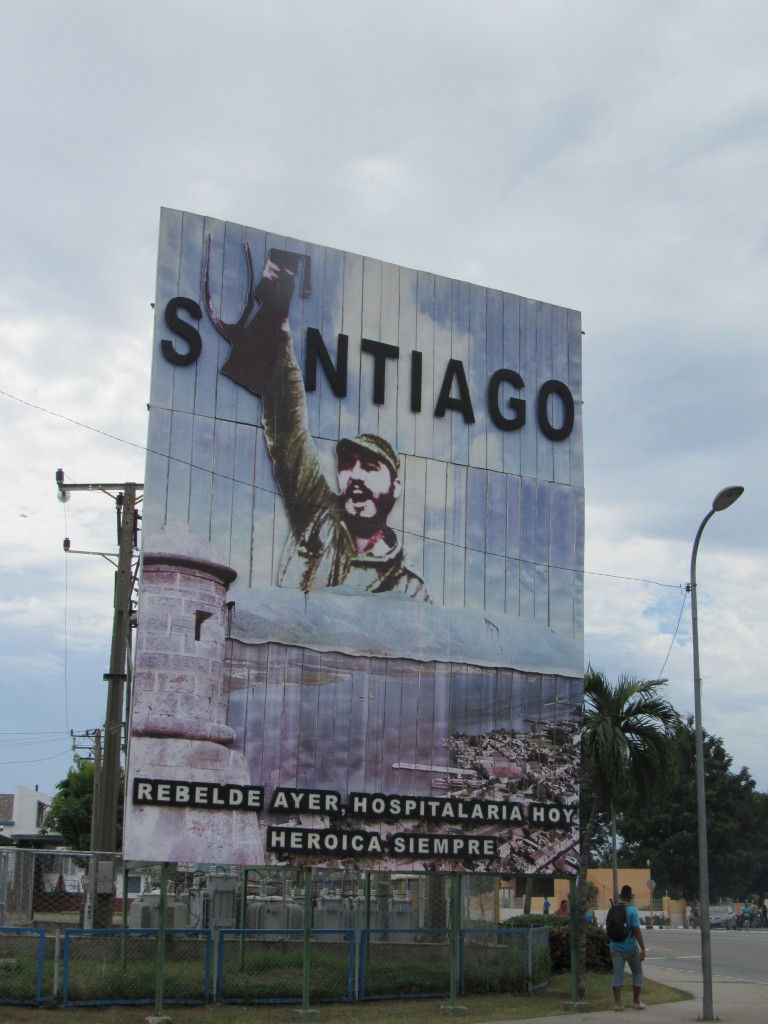
Political sign in Santiago de Cuba. Translation: Rebellious yesterday, hospitable today, heroic always
This was my first visit to a communist country, and I was curious and asked plenty of questions. I generally found people willing and anxious to discuss Cuba’s past, present and future. I listened with dismay (and a bit of shame) as they shared stories of their struggles during the Special Period, when the double whammy of the dissolution of the Soviet Union and the U.S. embargo nearly crippled Cuba’s economy. Famine was common and people were forced to subsist on rations that were about 1/5th of their prior food consumption. Power outages were the norm, often lasting 15 to 20 hours a day. One man relayed his story with a sense of pride, saying that Cuba’s survival was proof that Cubans could withstand anything. Another taxi driver revealed that he had to sell his car and nearly everything that he owned to support his family during the Special Period. Twenty-five years later, he leases his taxi and still has not been able to purchase another car of his own. He sorely wants to leave Cuba.
Interestingly, no one complained about a lack of liberty or personal freedoms. The overwhelming grievance was that wages were too low and the government needed to do more to improve the economic condition of the people. Although most Cubans are well educated (tuition is free), many are unemployed. For those with jobs, the average wage is only 20-25 CUC per month (equal to $20-25 USD). For professionals with advanced degrees, like an accountant or lawyer, the average wage is $50-55 CUC per month. Even physicians only earn 75 CUC per month. Many professionals moonlight as taxi drivers to earn extra income, mostly from tourists. Some have even quit their jobs because they earn more money in the lucrative tourist industry. I suspect this phenomenon will only get worse as more American tourists arrive, because we are largely viewed as rich and able to spend lots of money.
I left Cuba with the view that the Cuban people were the true pawns in this century long tiff between the U.S.A. and Cuba. Despite it all, they are incredibly welcoming to Americans and excited for what the future holds. I encourage you to go and see for yourself. Click here for helpful trip planning tips.
Have you traveled to Cuba? If so, what did you think about the social and economic situation? Share your comments below.
Share This
The post My First Impressions of Cuba first appeared on The Travel Sista.
]]>The post Farewell 2015, Hello 2016 first appeared on The Travel Sista.
]]>I started off the year with a road trip to New Orleans for Mardi Gras. I hung out with family, ate plenty of shrimp, beignets and gumbo, collected lots of beads, and even snagged a coveted coconut at the Zulu parade.
Thanks to a $178 glitch fare on Etihad Airlines, I touched down on the Asian continent for the first time with visits to Dubai and Abu Dhabi. I rode to the top of the Burj Khalifa, the world’s tallest skyscraper, wore an abaya for the first time, and toured the magnificent Grand Mosque. This was my first foray into the Middle East and it surprisingly had me yearning to see more.
I also returned to the Motherland thanks to the Etihad glitch, with visits to four countries in southern Africa. I attended the Cape Town Jazz Festival, hung out on Durban’s Golden Mile, visited Nelson Mandela’s childhood home and final resting place, drove the Panorama Route, and delighted in the animals at Kruger National Park in South Africa. I rode the infamous Sani Pass, went pony trekking, and stayed in a village in the mountains of Lesotho. I saw the Fish River Canyon, went sand boarding for the first time, and climbed a 260-foot sand dune in Namibia. And I trekked to Mantenga Falls and Ezulwini Valley in Swaziland. It all made me love Africa even more.
I stayed stateside over the summer, with visits to Navajo country and the Big Apple. I shot plenty of pictures at Antelope Canyon and Lake Powell in Arizona, but photographs just don’t do them justice. The entire area is nothing short of beautiful and amazing. If you haven’t yet been, you ought to. I also made a quick run to Brooklyn and was able to take in the Atlantic Antic Festival. As always, I marveled in the frenetic pace and the diversity of New York.
I ended the year with a visit to Cuba – the one place I’ve wanted to see for years, but never thought I’d be able to due to the US embargo. As a lover of Afro-Cuban music and salsa dancing, Cuba was everything I hoped for and more. I pray that the thawing of US-Cuba relations will lead to increased prosperity and opportunity for the Cuban people, who are some of the nicest folks on the planet.
I haven’t yet finalized my travel plans for 2016, but Machu Picchu, Thailand and East Africa are all on my radar. I’ll also be writing more and sharing more travel deals and trip planning tips. Here’s to wishing you a Happy New Year and more passport stamps in 2016.
Share ThisThe post Farewell 2015, Hello 2016 first appeared on The Travel Sista.
]]>The post Mexico: A Day in the Land of the Maya first appeared on The Travel Sista.
]]>Our guide Riaz picked me up from my hotel bright and early at 7:45 am. After collecting two more participants, we headed out for the 1.5 hour ride to the Mayan villages. Over the course of the morning, we visited three. The first was Esmeralda, where were greeted by several villagers and a local Shaman, a religious healer who performed a blessing ceremony for us using copal incense. After the brief ceremony, we walked around the grounds viewing various indigenous plants while Riaz told us about their medicinal and food uses. We then walked down an underground stairway to see a cenote, a natural sinkhole filled with clear, fresh water. I didn’t swim, but I did stick my feet into the warm waters.
Our next stop was Laguna Chabela, where we met the Santos family who has lived in this secluded community for several generations. They welcomed us into their home and introduced us to the mother Aurelia and her daughter-in-law, both of whom were cooking breakfast. As we walked around the property, we learned how they completely live off the land. The grounds were fascinating, with an abundance of lush vegetable, fruit and spice plants. They also had several huge turkeys. Before we left, Aurelia cooked fresh, hand-made corn tortillas for us – they were delicious.
Our last stop was Tres Reyes, where we saw the community church and plaza. There, we were treated to a Mayan lunch buffet of fresh vegetable soup, chicken, rice and beans, pasta, hand-made tortillas, and a desert, the name of which escapes me (it looked and tasted like a granola). To drink, we had a hibiscus tea and a green juice, both of which were delicious. It was cool to learn the food and drinks were prepared with some of the plants we’d seen earlier.
After lunch, we headed to the Mayan ruins of Coba. Located around two lagoons and a jungle, Coba is not as well known as Chichen Itza, the more famous Mayan site recently named as a one of the New Seven World Wonders. However, Coba also has several large pyramid temples, including the main temple, Ixmoja, which brave visitors can still climb (at the time of writing). We started off at the two ballgame courts and a smaller church pyramid near the entrance. Unfortunately, it started pouring rain soon after we arrived and I thought our visit would be ruined.
Luckily, there were scores of rickshaw drivers offering rides to the main pyramid for only 120 pesos. I happily paid and hopped on board the covered seat. As we rode down the long, gravel path we stopped at various structures for me to take photos. After about 10 minutes, we arrived at Ixmoja, the tallest pyramid in the Yucatan standing at 138 feet tall. While there were many brave souls making the 120-step hike to the top, my fear of heights and the slippery conditions made me decline. I hated to miss what I’ve heard are incredible views at the top, but nonetheless it was amazing to see this ancient temple still standing. Interestingly, only 2% of the site has been excavated so one can only imagine what other secrets lie behind the jungle.
After a long and interesting day, we made it back to Cancun around 6:00 p.m. Our guide Riaz was very informative and we had good conversation about a variety of topics, including the history of Alltournative and its mission of providing tourist-based economic sustainable development to the various Mayan communities. I enjoyed being a firsthand witness of their efforts to preserve the environment and support the local people.
Visit the Cancun, Mexico photo gallery to see more pictures
Have you visited any of the Mayan ruins or communities in Mexico? If so, please share your experience below.
** Thank you to Alltournative for providing this tour gratis. According to their website, Alltournative supports three sustainable development projects involving six different communities, turning those areas into protected natural sanctuaries. They offer a variety of eco-tours throughout the State of Quintana Roo.
Share This
The post Mexico: A Day in the Land of the Maya first appeared on The Travel Sista.
]]>The post Loíza: Puerto Rico Off the Beaten Path first appeared on The Travel Sista.
]]>Welcome sign to Loíza
Loíza is located on Puerto Rico’s northeast coast, just a short 15-minute drive from San Juan. It was settled in the 16th century by freed and escaped Nigerian slaves from the Yoruba tribe and it retains the highest percentage of African descendants on the island. Their music and traditional food is woven into the Puerto Rican culture and can be found in all its splendor in Loíza. Local attractions include a nature boardwalk and bicycle path, the San Patricio Catholic Church (one of the oldest churches on the island), and the Maria de la Cruz Cave (where the oldest human remains recorded in Puerto Rico were found).
On my way to Loíza, I passed through Piñones, the beachfront community of kiosks (kioskos) and restaurants that sell a variety of Puerto Rican fried fritters (frituras) and street food. I stopped at the popular “Kiosko El Boricua” where I had chicken Pinchos (Puerto Rican shish kabobs). The cooks were decidedly of African descent and darker complected than other Puerto Ricans I’d seen on the island. But it was of no consequence, as people of all hues waited in the long line to place their order. It was a fun, friendly atmosphere as the DJ spun the latest Puerto Rican beats and the bar served ice cold beer. The various smells of grilled and fried food wafting through the air were heavenly.
Pinchos
The traffic was heavy and I spent about an hour cruising the beach and taking in the sights and sounds. Bomba music with its strong drum beats (derived from the music of African slaves) and reggaeton could be heard blaring from beachfront speakers (several popular musical artists have their roots in Loíza, including Daddy Yankee and Don Omar). Stilt walkers (gigantes) danced around as people enjoyed the sun and beautiful beach views, and the mood was carefree and festive. It was an enjoyable afternoon and I’m glad I made the last minute decision to go.
The next time you visit Puerto Rico, make your way over to Loíza if you want a break from the typical tourist attraction and you don’t mind hanging with the locals. But be sure to practice up on your Spanish. You just might need a word or two.
Do you have an Off-The-Beaten-Path tale? If so, please share it below.
Share ThisThe post Loíza: Puerto Rico Off the Beaten Path first appeared on The Travel Sista.
]]>The post Easter in Puerto Rico first appeared on The Travel Sista.
]]>We landed on Easter Sunday around 2 pm in the afternoon. After a 30-minute drive from the airport, we arrived at our beachfront vacation condo at Playa Azul in Luquillo. We got there around 4pm, early enough to spend a couple of hours on the beach before sunset. The beach was packed with mostly locals and a few tourists enjoying the beautiful weather and views. Later on for dinner, we ventured out to Rincon del Sabor, a family-owned restaurant operated by Luis and his chef wife, Carmen. I had the Snapper Creole (Criollo) served with rice and beans (which I learned are called arroz con habichuelas, not frijoles as beans are called in Spanish in Mexico). It was delicious! Luis was the ultimate host during the meal and made me feel like family. When the meal was done, we shared a shot of his strong homemade moonshine.
On the Monday after Easter, which was a Puerto Rican holiday, we headed to Luquillo Beach (Balneario Monserrate). It was a sunny, hot day and the beach was packed with mostly families and groups of young people. We spent the entire day there, meeting friendly people on the beach and soaking up the sun and fun. By late afternoon we had built up an appetite, so for dinner we went back to visit Luis and his family at Rincon del Sabor. Once again, the food was good, the service was great, and we had a blast. We were even serenaded by Luis’ friend who stopped by to say hi; his voice was beautiful.
On Tuesday, we visited the island of Culebra. We mainly wanted to see Flamenco Beach, which was recently named one of the top 10 beaches in the world (Yes, it lived up to its billing). The beach was beautiful with fine, white sand and crystal clear, warm water, but it took some effort to get there — first, we had to drive from Luquillo to the ferry dock in Fajardo (about 20 minutes away); then, we bought our tickets and stood in line for over an hour before boarding the ferry; then, we took an hour-long ferry ride; finally, after arriving on the island, we rented a golf cart and rode to Flamenco Beach. It was another hot, perfect day for lounging on the beach and we stayed for several hours before leaving to see more of the island. Next, we took the bumpy ride to Tamarindo Beach, which is known for its reef and snorkeling with sea turtles. We didn’t snorkel, so we missed out on the wildlife, but it was pretty nonetheless. After taking some photos, we left there and explored the entire island for about an hour before heading back to catch our return ferry.
On Wednesday, our last day in the Luquillo area, we went to El Yunque, the only rain forest in the U.S. National Park system. It was just as beautiful as I remembered. We drove around gazing at the lush greenery before stopping to take pictures at one of the many waterfalls. We then took an hour long hike on the La Mina trail. The heat and high humidity got the best of us so we didn’t make the full hike, but still there were beautiful views at every turn.
After El Yunque, we headed back to San Juan where we stayed for the rest of the trip. By the time we arrived and got checked into our hotel, we were both hungry and tired so we decided to eat dinner at the hotel. I tried another Puerto Rican dish, Mofongo (mashed plantains) with garlic chicken, which was tasty and filling. We met a nice Puerto Rican couple seated next to us, and we talked and shared cocktails over dinner. They invited us to hang out with them and see another part of the island before we left. Of course, we accepted and made plans to spend the day together on Friday.
On Thursday, we went to the Plaza Las Américas mall in San Juan (at the suggestion of our new friends Lee and Yemilyn). This huge shopping center is like a typical American mall, with Sears, JCPenney, Macy’s, a movie theater, and a variety of restaurants. We walked around most of the mall, but found no deals good enough to travel with back home. So after several hours we left and decided to explore more of the city. We finally ended up in Old San Juan for some sightseeing, souvenir shopping, and early dinner. We returned to the hotel in time for the free happy hour and I double-fisted two rum punches while strolling the nearby Isla Verde beach.
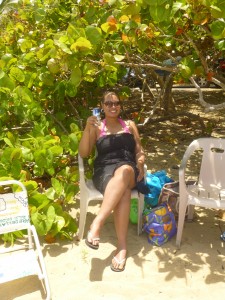 Chillin under a mangrove tree on Pozuelo beach
Chillin under a mangrove tree on Pozuelo beach
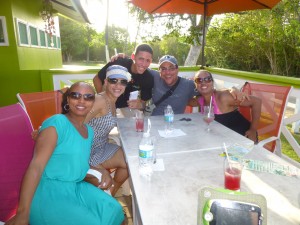 Hangin’ with Lee and Yemilyn in Guayama
Hangin’ with Lee and Yemilyn in Guayama
On Friday, we met up with Lee and Yemilyn for a day of fun and sun. We followed them to Guayama, on the south coast, and after several twists and turns on the back roads we arrived at the hidden Pozuelo beach. We found shade under a mangrove tree and had the beach to ourselves for most of the day. Between dips, we drank beer and wine and had great conversations about life in the United States and Puerto Rico. We ended the day with finger foods, drinks and dancing at El Balcón de Gerald, a outdoor neighborhood bar. We had a wonderful day and vowed to meet up again during my next trip to PR.
On Saturday, we spent the day in Old San Juan. We started out in the morning flying kites near El Morro Fort. It was teaming with other people doing the same. Later, I visited the Museo de la Americas which celebrates the influence of Indian, African and European peoples on Puerto Rican history and culture. There were eight exhibition rooms, including three permanent collections: Traditional Art of the Americas, The Indian in America, and African Heritage. I especially enjoyed the museum because the exhibits are written from a non-colonial perspective (with both English and Spanish translations). Later that afternoon, we headed to Loiza, on the northeast coast. I’d learned it was the center of Afro-Puerto Rican culture so I wanted to go before I left. I didn’t get to spend much time there, but I enjoyed it and I’m glad I made the time to visit. I’d definitely go back.
I returned home the following morning, reminiscing about the trip and thinking about what I wanted to see on my next visit. With cheap airfares, no passport needed, friendly people, and plenty of beaches, nature, culture and history, Puerto Rico is the perfect getaway from the USA.
What do you like about Puerto Rico? Share your thoughts below.
Share ThisThe post Easter in Puerto Rico first appeared on The Travel Sista.
]]>The post Cabo San Lucas: Mexico’s South Beach first appeared on The Travel Sista.
]]>On the beach (at the airport, hotel, and everywhere else in Cabo), you quickly learn to “play the game.” Timeshares are big in Cabo, and folks masquerading as waiters or hospitality clerks will nearly beg you to attend a 90-minute timeshare presentation. In exchange, they’ll offer free breakfast and a thank you gift. I usually go to at least one presentation and negotiate for multiple gifts. I enjoy looking at different properties (even though I don’t intend to buy a timeshare), so it’s fun for me. I’ve gotten dinner gift certificates, liquor, ATV tours and jet ski rentals, among other gifts. But I have a strict, 3-hour “get me back to the beach” rule. When you consider transportation, actual tour time, and other logistics, the 90-minute tour is more like 3 to 4 hours. So if you don’t want to leave the beach for that long, you may want to decline.
Medano Beach is also prime territory for vendors selling a variety of Mexican wares and services, from blankets, pottery, and jewelry to hair braiding and temporary tattoos. They can be pesky at times, but it’s all part of the fun. If you decide to buy, make sure to haggle for the best deal. If not, a friendly “no gracias” will usually send them on their way to the next customer.
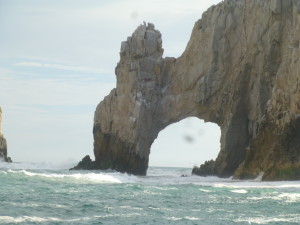 But the best thing about Medano Beach is the water activities. Jet skis, banana boats, water trampolines, snorkeling, parasailing and glass bottom boats — Medano Beach has it all. By day, the beach is teaming with water daredevils, like myself (my fave is the jet ski). By night, the sunset and booze cruises take over. It’s so beautiful and peaceful to be out on the water, surrounded by beautiful mountain views and El Arco, Cabo’s famous rock landmark. I promise if you haven’t been to Cabo yet, once you go you’ll be hooked.
But the best thing about Medano Beach is the water activities. Jet skis, banana boats, water trampolines, snorkeling, parasailing and glass bottom boats — Medano Beach has it all. By day, the beach is teaming with water daredevils, like myself (my fave is the jet ski). By night, the sunset and booze cruises take over. It’s so beautiful and peaceful to be out on the water, surrounded by beautiful mountain views and El Arco, Cabo’s famous rock landmark. I promise if you haven’t been to Cabo yet, once you go you’ll be hooked.
What do you love about Cabo? Comment below.
Click here for more Cabo photos
The post Cabo San Lucas: Mexico’s South Beach first appeared on The Travel Sista.
]]>